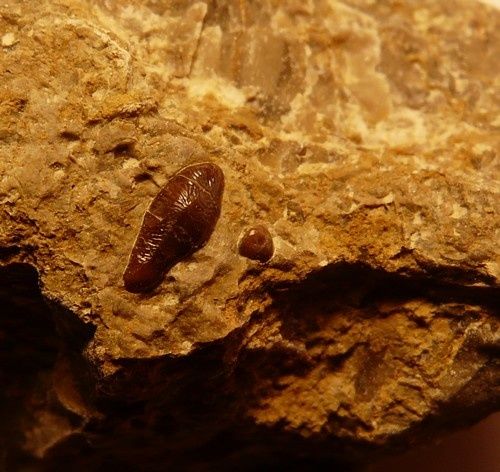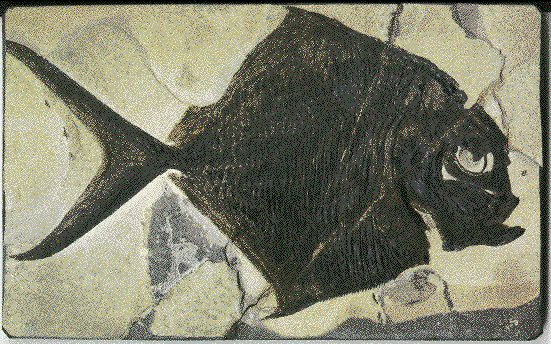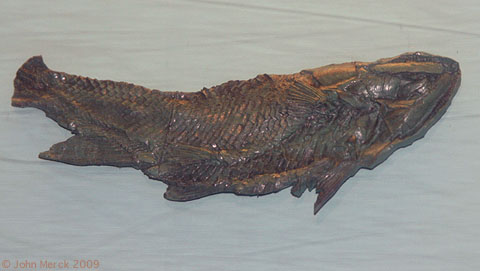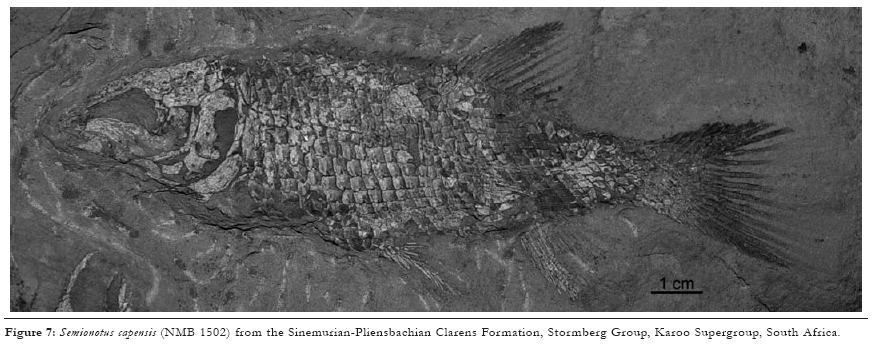[Recent Entries][Archive][Friends][User Info]
December 14th, 2011
| December 14th, 2011 | |
|---|---|
| 07:12 pm [industrialterro] [Link] |
Titanoptera Титанопте́ры (Titanoptera, от др.-греч. τιτάν — гигант и πτέρο — крыло) — вымерший отряд новокрылых насекомых с неполным превращением. Одни из самых крупных насекомых в истории Земли. Тело продолговатое. Голова более или менее треугольная с мощными, зазубренными на конце челюстями. Усики длинные, нитевидные. Переднеспинка седловидная, со свешивающимися вниз боковыми лопастями. Передние ноги хватательные, с двумя рядами крупных острых шипов по внутренней стороне голени. Средние и задние ноги бегательные. Лапки 5-члениковые, с хорошо развитой присоской между коготками. Крылья хорошо развиты, передние кожистые, задние перепончатые; в покое складываются плоско на спине. Все титаноптеры, и самцы, и самки, имеют на передних крыльях расширенные области между продольными жилками, которые часто трактуются как звуковой аппарат (Цойнер, 1939). Самки имеют короткий наружный яйцеклад, лишенный каких-либо шипов или насечек. Церки короткие, нечленистые. Представители семейства Gigatitanidae известны своими размерами: некоторые экземпляры рода Gigatitan достигают 40 см в размахе крыльев. Большой размер и хищный образ жизни делали титаноптер наиболее устрашающими насекомыми своего времени. Впервые представители этого отряда были описаны в 1916 году палеоэнтомологом Тильярдом, но при описании были неверно помещены им в подкогорту Paraneoptera. Лишь в конце 1930-х, по мере открытия новых видов, стала вырисовываться их связь с прямокрылыми. Шаровым, основным исследователем титаноптер, окончательно были установлены их родственные отношения с Orthoptera. Также он выдвинул гипотезу, в которой обосновывал их происхождение, наряду с палочниками, от семейства Tcholmanvissidae. Позднее, однако, было показано (Гороховым и другими), что титаноптеры изначально не имели основной черты прямокрылых — способности к прыжку, а потому произошли не от прямокрылых, а от общих с ними предков в пределах Polyneoptera. В предложенной Шаровым классификации отряд делится на три семейства: Mesotitanidae (включающее наиболее примитивные виды), Paratitanidae и Gigatitanidae. Семейства различаются в основном по особенностям жилкования. Титаноптеры, вероятно, являются одими из наиболее изученных вымерших насекомых. Доказано, что они вели дневной образ жизни. В отличие от прочих прямокрылообразных титаноптеры были исключительно хищными насекомыми. Это были подстерегающие хищники, жившие на растениях и занимавшие экологическую нишу современных богомоловых. Наличие возможного звукового аппарата позволяет предполагать о существовании у них достаточно сложного полового поведения. Следует отметить, что принцип действия звукового аппарата был основан на трении всего крыла о другое крыло при положении крыльев плоско на спине и в этом отношении отличался от принципа действия звукового аппарата настоящих прямокрылых. Титаноптеры были яйцекладущими, однако субстрат, в который они откладывали яйца, остается неизвестным. На одном из отпечатков сохранились оболочки яиц, находившихся в брюшке самки. Они очень мелкие, с гладкой скульптурой оболочки. Испытав расцвет в начале триаса, к концу его титаноптеры полностью вымерли. Какова была причина их вымирания, сказать трудно. Среди многочисленных сборов ископаемых насекомых юрского периода каких-либо потомков титаноптер не найдено.
Tags: Вымершие членистоногие, Триас |
| Time | Event |
| 07:31 pm [industrialterro] [Link] |
Acrodus Acrodus is an extinct genus of cartilaginous fish from the Triassic. The species Acrodus anningiae was named in honor of pioneering paleontologist Mary Anning.
Tags: Вымершие рыбы, Триас, Хрящевые |
| Time | Event |
| 07:44 pm [industrialterro] [Link] |
Chinlea Chinlea is an extinct genus of Triassic lobe-finned fish found in the Southwestern United States states of Arizona and New Mexico.
Tags: Вымершие рыбы, Лопастепёрые, Триас |
| Time | Event |
| 08:01 pm [industrialterro] [Link] |
Bobasatrania Bobasatrania is an extinct genus of prehistoric bony fish. Many species of Bobasatrania existed during the Triassic (approx 240M years BP) in the shallow coastal waters off the Pangaea supercontinent. Their fossils are therefore found throughout the world, with some of the best examples coming from the Wapiti Lake region of British Columbia, Canada. They have a distinctive diamond-shaped body, forked tail and long thin pectoral fins. The largest examples are up to a metre in length, though most are considerably smaller. The structure of their teeth suggests they fed on small shelled animals.
Tags: Вымершие рыбы, Лучепёрые, Триас |
| Time | Event |
| 08:09 pm [industrialterro] [Link] |
Cleithrolepis Cleithrolepis is an extinct genus of ray-finned fish from the Triassic. The genus grew to about 30 centimetres (12 in) long. It had a weak lower jaw with teeth only at the tip. Cleithrolepis lived in rivers, billabongs and lakes in the large braided river system that deposited the Hawkesbury Sandstone in what is now New South Wales, with fossils found in shale lenses within the sandstone.
Tags: Вымершие рыбы, Лучепёрые, Триас |
| Time | Event |
| 08:16 pm [industrialterro] [Link] |
Perleidus Perleidus is an extinct genus of ray-finned fish from the Triassic period. Fossils have been found worldwide. Perleidus was a freshwater predatory fish, about 15 centimetres (5.9 in) in length. Its jaws hung vertically under the braincase, allowing them to open wide, a feature it shared with the earlier palaeonisciform fish, from which it may have been descended. Unlike those earlier fish, however, Perleidus and its relatives had highly flexible dorsal and anal fins, with a reduced number of fin rays. This would have made the fish more agile in the water.
Tags: Вымершие рыбы, Лучепёрые, Триас |
| Time | Event |
| 08:25 pm [industrialterro] [Link] |
Pholidophorus Pholidophorus is an extinct genus of teleost fish from the Triassic and Jurassic periods of Africa, Europe, and South America. Pholidophorus was a herring-like fish about 40 centimetres (16 in) long, although it was not closely related to modern herring. Like them, however, it had a single dorsal fin, a symmetrical tail, and an anal fin placed towards the rear of the body. It had large eyes and was probably a fast-swimming predator, hunting planktonic crustaceans and smaller fish. A very early teleost, Pholidophoris had many primitive characteristics such as ganoid scales and a spine that was partially composed of cartilage, rather than bone.
Ископаемые останки (1, 2, 3, 4, 5, 6):
( Далее ) Tags: Вымершие рыбы, Лучепёрые, Триас |
| Time | Event |
| 08:35 pm [industrialterro] [Link] |
Saurichthys Saurichthys ('lizard fish') is an extinct genus of ray-finned fish from the Triassic period. Fossils have been found worldwide. Saurichthys was an elongated, streamlined, fish about 1 metre (3.3 ft) long, and looked similar to the modern pike. Its dorsal and anal fins were placed opposite each other well back on the body, and the tail was symmetrical. These features would have made it a powerful swimmer, and it is presumed to have hunted in a similar way to the pike, attacking from an ambush at high speed. Its jaws were extremely long, making up a third of the total body length, and ended in a sharp, beak-like tip. Fossil evidence, in the form of a bolus of bones in the same strata, indicates that Saurichthys attacked, or possibly scavenged the corpses of fishing pterosaurs such as Preondactylus. Their closest modern-day relatives include the sturgeons, paddlefish, and the bowfins.
Ископаемые останки (1, 2, 3, 4, 5, 6, 7):
( Далее ) Tags: Вымершие рыбы, Лучепёрые, Триас |
| Time | Event |
| 08:54 pm [industrialterro] [Link] |
Semionotus Semionotus ("Flag-Back") is an extinct genus of ray-finned fish found throughout Northern Pangaea (North America and Europe) during the late Triassic, becoming extinct at the start of the Jurassic.
Ископаемые останки (1, 2, 3, 4):
Tags: Вымершие рыбы, Лучепёрые, Триас |
| Previous Day | 2011/12/14 [Archive] |
Next Day |



































